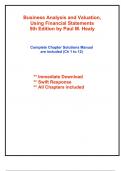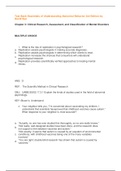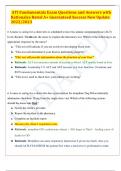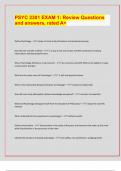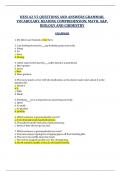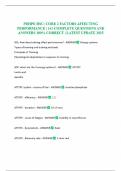Tentamen (uitwerkingen)
Solutions for Business Analysis and Valuation, Using Financial Statements, 5th Edition Healy (All Chapters included)
- Vak
- Instelling
Complete Solutions Manual for Business Analysis and Valuation, Using Financial Statements, 5th Edition by Paul M. Healy, Krishna G. Palepu ; ISBN13: 9781111972301. (Full Chapters included Chapter 1 to 12)....1. A Framework for Business Analysis and Valuation Using Financial Statements. 2. Strategy...
[Meer zien]
